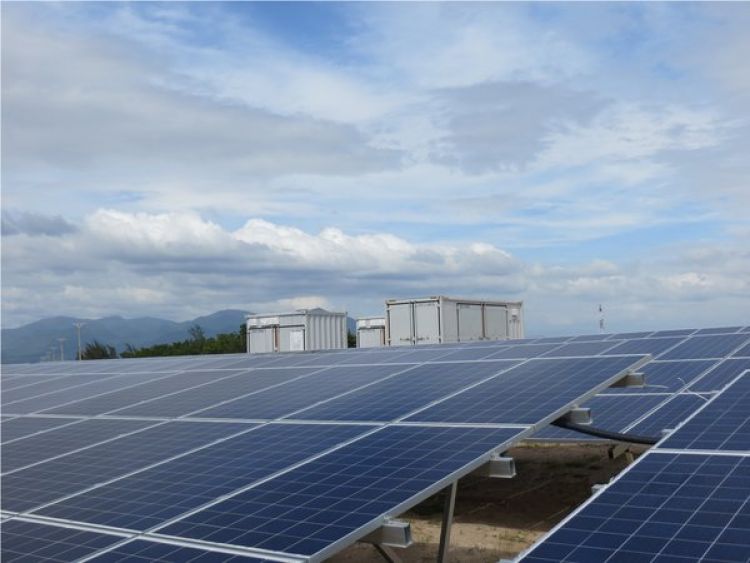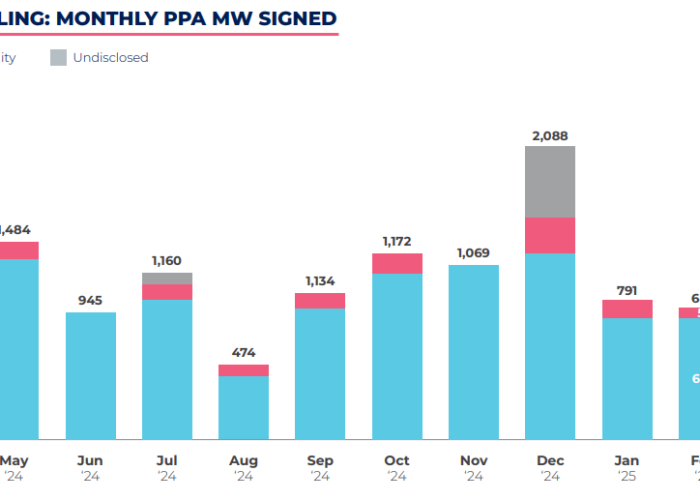
In July, the Vietnamese government announced it would permit direct power purchase agreements (PPAs) between independent power producers and large electricity consumers.
There will be two ways to sell power to customers. First, power can be sold via the national grid, which involves the purchase and sale of electricity via a term contract between an independent power producer (IPP) and a large electricity user or an authorised electricity retailer within a zonal or cluster model. Second, IPPs can sign an electricity trading contract with consumers, selling power via a private connection line.
Unlock unlimited access for 12 whole months of distinctive global analysis
Photovoltaics International is now included.
- Regular insight and analysis of the industry’s biggest developments
- In-depth interviews with the industry’s leading figures
- Unlimited digital access to the PV Tech Power journal catalogue
- Unlimited digital access to the Photovoltaics International journal catalogue
- Access to more than 1,000 technical papers
- Discounts on Solar Media’s portfolio of events, in-person and virtual
Or continue reading this article for free
These announcements could bring many changes to Vietnam’s energy and solar sectors, as the state-owned Vietnam Electricity (EVN) fully owns and operates the country’s power grid.
Direct PPA
According to market intelligence company BMI, part of the Fitch Group, with the introduction of this policy, consumers are now allowed to purchase electricity directly from power producers through their own transmission and distribution infrastructure without the need to go through EVN’s network.
“We believe this policy will unlock opportunities for renewables as it increases electricity supply avenues,” said a briefing note from BMI released after the PPA was approved.
However, if consumers still want to use EVN’s grid, they can purchase power directly through the national power grid using forward contracts or retail electricity suppliers, the latter of which is only allowed in government-authorised locations.
The Vietnamese government aims to use this policy to promote investment in the country’s renewables sector by enacting new market mechanisms, as stated by the Ministry of Industry and Trade.
“We expect more collaboration between companies in the industrial sector and IPPs, especially as Vietnam looks to expand its manufacturing sector,” the BMI report says.
Tristen Pheh, junior renewables analyst at Rystad Energy, says the price of direct PPAs is likely to be a premium in the early stages “due to the high demand for renewables”.
“Renewables were difficult to procure in the past three years given the lack of financial incentive for renewables pre-PDP8. The successful implementation of the direct PPA mechanism could enhance the competitiveness in Vietnam’s retail electricity market, driving prices lower in the future,” he says.
Vietnam’s solar potential
The Vietnamese government released Vietnam’s Eighth Power Development Plan (PDP8) in mid-2023 for the period between 2021 and 2030. The PDP8 states that 50% of office buildings and 50% of houses will use self-consumption solar modules by 2030.
PDP8 also states that Vietnam’s solar power potential is 963GW, with land-based solar accounting for about 837.4GW, floating solar for around 77.4GW, and rooftop solar for about 48.2GW. By 2050, the total solar capacity is projected to reach between 168.6GW and 189.6GW, producing around 252.1-291.5 billion kWh of power annually.
However, according to the International Renewable Energy Agency’s (IRENA) Renewable Energy Statistics 2021, Vietnam’s installed solar PV capacity in 2020 was estimated at 16,504MW.
The US International Trade Administration offers a more ambitious prediction. It estimates that Vietnam’s total technical potential for solar energy is up to 1,646GW, comprising 1,569GW from ground-mounted systems and 77GW from water-based systems. The total potential for large-scale solar PV projects nationwide is approximately 386GW.
Challenges of harnessing solar potential in Vietnam
However, harnessing solar potential in Vietnam could be a challenge. Pheh says one of the current issues faced by solar developers in Vietnam is a lack of a viable offtake mechanism.
Local Vietnamese media outlet Việt Nam News reported that the country’s industry and trade ministry had described its feed-in-tariff (FiT) mechanism as “no longer appropriate”, adding that FiT should be applied “within a certain period of time in order to encourage investments in renewable energy”.
Commenting on this, Pheh says the Vietnamese government’s approval of the direct PPA “has partially solved this issue” by giving solar developers a means of obtaining a PPA from offtakers aside from EVN.
However, the previous FiT mechanism did bring some changes in Vietnam’s renewables sector. Rystad Energy’s data shows that foreign stakeholders make up less than a third of renewables ownership now, but it increased from lower than 8% before the FiT period in Vietnam in 2017-2021.
Currently, the Vietnamese government has some incentives to encourage the development of solar projects.
“Solar developers are eligible for a four-year income tax holiday, followed by reduced corporate income tax rates for the following 11 years. Additionally, solar PV equipment is exempted from import duties, provided the equipment cannot be manufactured domestically.
“Land use fees may be waived for three to 20 years as well, depending on the provincial regulations,” says Pheh.
Despite the Vietnamese government’s plan to increase installed solar capacity, Vietnam’s power supply will remain dominated by fossil fuels as the government is pursuing more baseload electricity.
According to BMI’s forecast, coal-fired power will maintain its share above 40% of the power mix to 2033. As for gas-fired power, its share of the power mix will increase from 10% in 2023 to more than 20% in 2033, supported by the commissioning of liquified natural gas facilities and increased gas production.
In other words, renewables will account for less than 40% of Vietnam’s power mix. Of the renewables capacity, hydropower’s share will be close to half of it.







